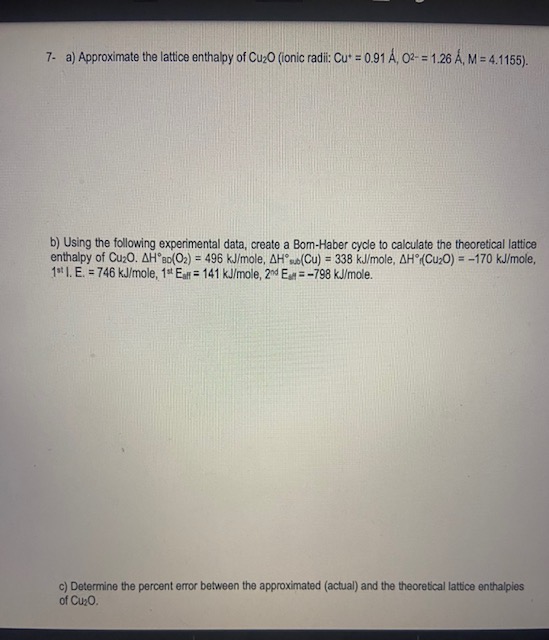Answered step by step
Verified Expert Solution
Question
1 Approved Answer
a) Approximate the lattice enthalpy of Cu_(2)O (ionic radii: Cu^(**)=0.91A,O^(2-)=1.26angstrom ,M=4.1155 ). b) Using the following experimental data, create a Bom-Haber cycle to calculate the
a) Approximate the lattice enthalpy of
Cu_(2)O(ionic radii:
Cu^(**)=0.91A,O^(2-)=1.26\\\\angstrom ,M=4.1155).\ b) Using the following experimental data, create a Bom-Haber cycle to calculate the theoretical lattice enthalpy of
Cu_(2)O.\\\\Delta H\\\\deg _(ao)(O_(2))=496k(J)/(m)ole,\\\\Delta H\\\\deg so(Cu)=338k(J)/(m)ole,\\\\Delta H\\\\deg (Cu_(2)O)=-170k(J)/(m)ole,\ c) Determine the percent error between the approximated (actual) and the theoretical lattice enthalpies of
Cu_(2)O.

Step by Step Solution
There are 3 Steps involved in it
Step: 1

Get Instant Access to Expert-Tailored Solutions
See step-by-step solutions with expert insights and AI powered tools for academic success
Step: 2

Step: 3

Ace Your Homework with AI
Get the answers you need in no time with our AI-driven, step-by-step assistance
Get Started


